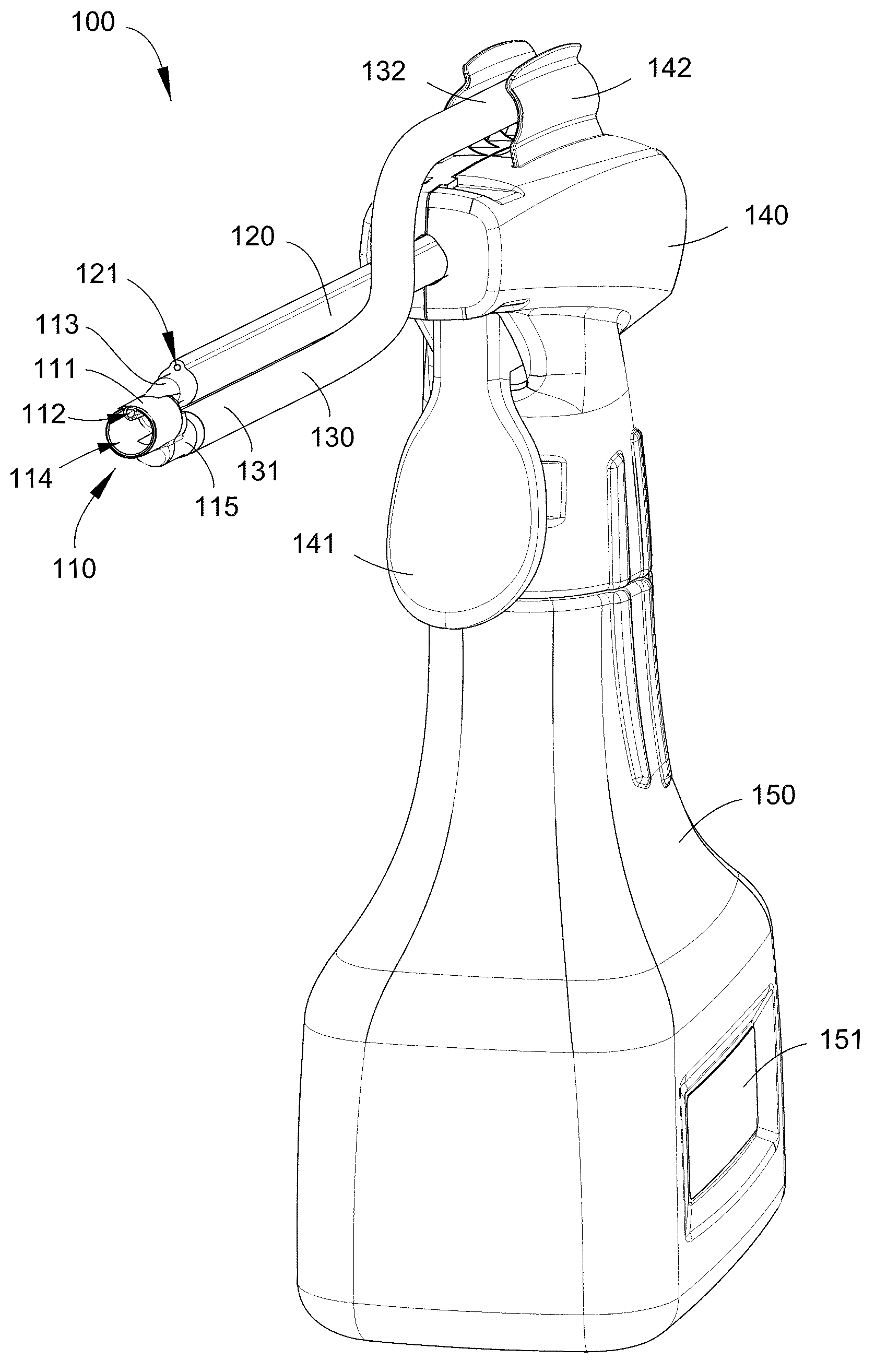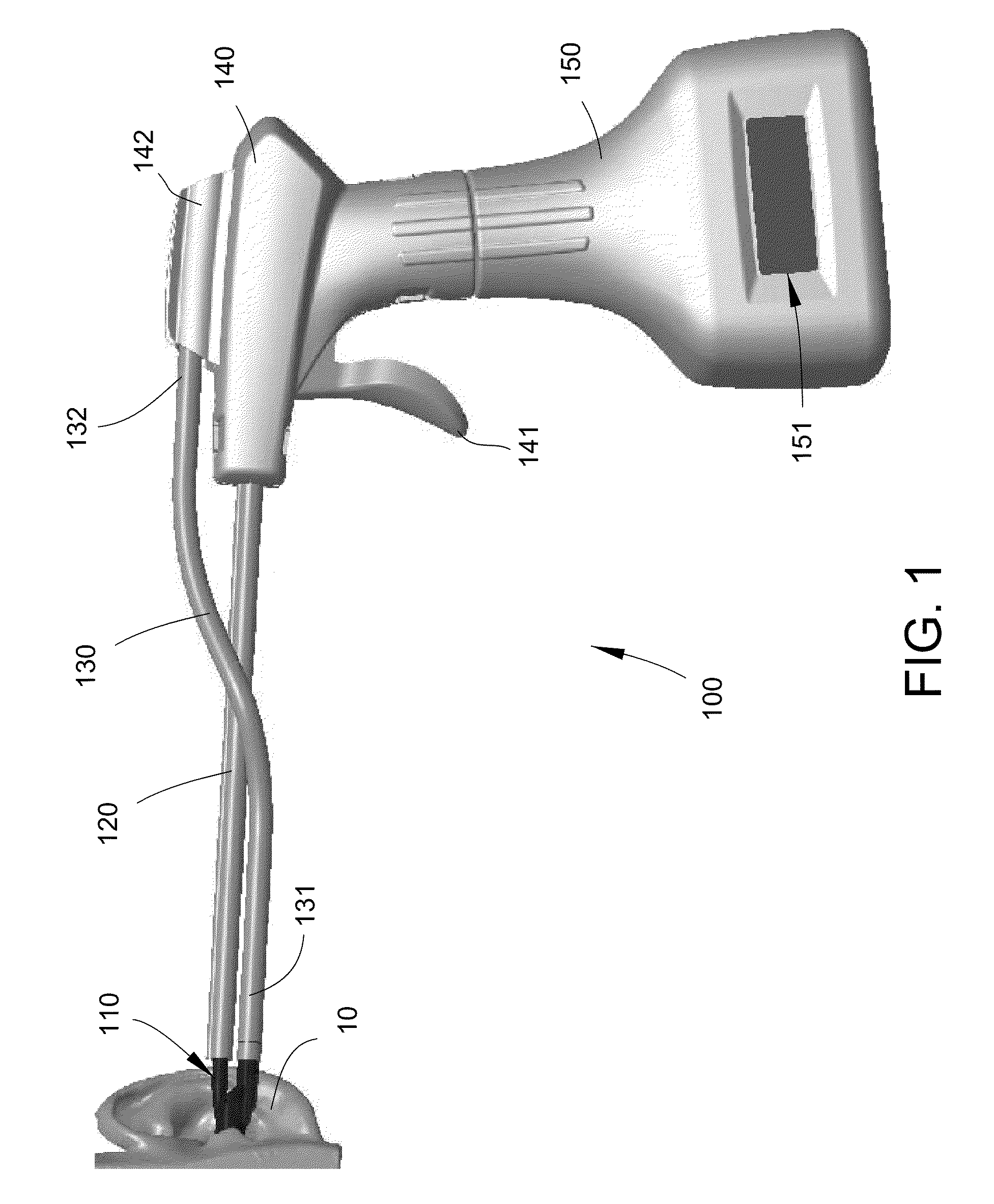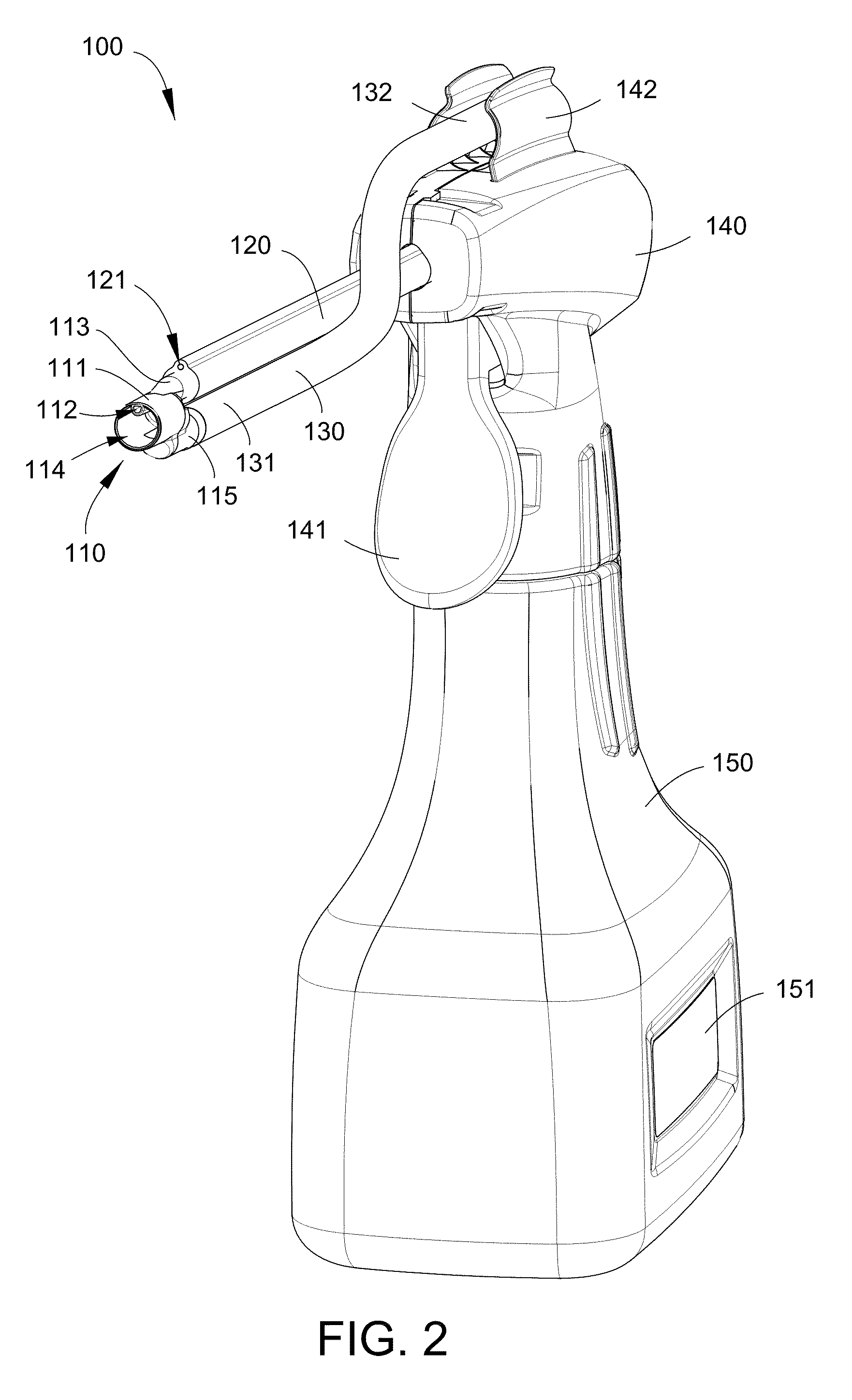Body cavity irrigation device
a body cavity and irrigation device technology, applied in the field of devices, can solve the problems of inability to easily control the reliable pressure of the lavage fluid exiting the nozzle and impinging on the ear canal, the nozzle capacity limitation of the device, and the inability to discharge the lavage fluid in a reliable manner, so as to facilitate the prevention of potential contamination, facilitate the safe and effective range of discharge velocity, and facilitate the effect of us
- Summary
- Abstract
- Description
- Claims
- Application Information
AI Technical Summary
Benefits of technology
Problems solved by technology
Method used
Image
Examples
Embodiment Construction
[0023]The following detailed description is not to be taken in a limiting sense, but is made merely for the purpose of illustrating the general principles of the invention, since the scope of the invention is best defined by the appended claims.
[0024]In its various embodiments, the present invention focuses on a device for irrigating a body cavity, particularly an external ear canal. Referring to FIGS. 1-2, in one embodiment, an applicator 110 of the device 100 may be inserted into the external ear canal of ear 10. A feeding tube 120 connects the applicator 110 to a pump 140, which has a trigger 141 biased outward and a holder 142. A drain tube 130 connects to the applicator 110 with a first end 131 and to a vacuum line (not shown) with a second end 132 wherein the holder 142 may support a junction of the second end 132 and the vacuum line. A container 150 with a temperature indicator 151 may be fastened to the pump 140.
[0025]For the purpose of current disclosure, term ‘pump’ means ...
PUM
 Login to View More
Login to View More Abstract
Description
Claims
Application Information
 Login to View More
Login to View More - R&D
- Intellectual Property
- Life Sciences
- Materials
- Tech Scout
- Unparalleled Data Quality
- Higher Quality Content
- 60% Fewer Hallucinations
Browse by: Latest US Patents, China's latest patents, Technical Efficacy Thesaurus, Application Domain, Technology Topic, Popular Technical Reports.
© 2025 PatSnap. All rights reserved.Legal|Privacy policy|Modern Slavery Act Transparency Statement|Sitemap|About US| Contact US: help@patsnap.com



